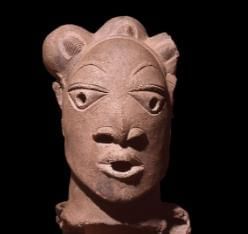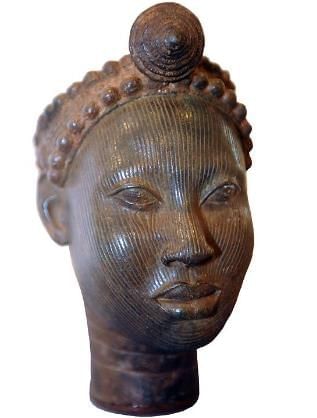Year 6 Exam > Year 6 Notes > History for Year 6 > Benin and other West African kingdoms
Benin and other West African kingdoms | History for Year 6 PDF Download
| Table of contents |

|
| Kingdoms in West Africa through time |

|
| What kind of art did people create? |

|
| Who was Mansa Musa? |

|
| What happened to the African kingdoms? |

|
Kingdoms in West Africa through time
- West Africa has been the cradle of several remarkable kingdoms and empires over the centuries.
- The earliest known kingdom was that of the Nok people, who settled near the River Niger around 500 BC. They were skilled farmers, potters, and metalworkers.
- The kingdom of Ife emerged in the rainforest around the 600s, and its art and religious practices significantly influenced the Benin kingdom, which flourished from the 900s and reached its peak between the 1400s and 1600s. From 700 to 1600, three powerful empires dominated central West Africa: Ancient Ghana, Mali, and Songhai, all amassing great wealth through the gold trade.
- One of the later prominent kingdoms was Asante, established around 1700, renowned for its intricate gold craftsmanship.
 A Nok clay head.
A Nok clay head.
What kind of art did people create?
- West African artisans were highly skilled in pottery and metalwork, working with materials like brass and gold. In the Nok kingdom, potters crafted terracotta sculptures depicting human figures, often adorned with elaborate hairstyles and delicate jewelry.
- The kingdom of Ife was celebrated for its brass sculptures, which portrayed gods, humans, and animals.
- In the Asante kingdom, goldsmiths created lavish ornaments to display the king’s wealth, including gold necklaces, rings, bracelets, and anklets.
- The Asante king also used gold castanets, attached to his thumb and forefinger, which he clapped to command attention.
 Brass workers in the kingdom of Ife were famous for their sculptures. This sculpture shows the head of an Ooni (ruler) of Ife.
Brass workers in the kingdom of Ife were famous for their sculptures. This sculpture shows the head of an Ooni (ruler) of Ife.
Who was Mansa Musa?
- Mansa Musa, a wealthy Muslim king of Mali, ruled from approximately 1280 to 1340. He embarked on a grand pilgrimage to the Muslim holy city of Mecca, accompanied by 72,000 men carrying gold and 80 camels laden with gold dust.
- Along the way, Musa generously distributed gold to those he encountered. Upon returning, he brought teachers and architects to Mali, leading to the construction of mosques and schools in cities like Timbuktu and Gao.
- These buildings featured vibrant domes and gold-covered doors and windows, some of which still stand in Timbuktu today, though their golden decorations have faded.
What happened to the African kingdoms?
Most West African kingdoms gradually declined, giving way to new African kingdoms that rose in their place. However, by the 1890s, European powers began colonizing the region, driven by competition for valuable resources like gold, oil, and rubber. Britain and France, in particular, sought control over West African territories, leading to the takeover of some kingdoms.
The document Benin and other West African kingdoms | History for Year 6 is a part of the Year 6 Course History for Year 6.
All you need of Year 6 at this link: Year 6
|
3 videos|69 docs
|
FAQs on Benin and other West African kingdoms - History for Year 6
| 1. What were some prominent kingdoms in West Africa throughout history? |  |
Ans. Some of the prominent kingdoms in West Africa included the Ghana Empire, the Mali Empire, and the Songhai Empire. These kingdoms were known for their wealth, trade routes, and cultural achievements. The Benin Kingdom is also notable for its advanced political structure and artistic contributions.
| 2. What types of art and cultural expressions were created in West African kingdoms? |  |
Ans. West African kingdoms produced various forms of art, including intricate sculptures, pottery, textiles, and masks. Notably, the Benin Kingdom is famous for its bronze plaques and sculptures that depicted historical events and royal figures. These art forms often had religious and ceremonial significance, reflecting the rich cultural heritage of the region.
| 3. Who was Mansa Musa and why is he significant in West African history? |  |
Ans. Mansa Musa was the ruler of the Mali Empire during the early 14th century and is often regarded as one of the wealthiest individuals in history. His pilgrimage to Mecca showcased his immense wealth and brought global attention to the Mali Empire. He is also credited with promoting education, architecture, and the Islamic faith throughout his empire.
| 4. What factors contributed to the decline of the African kingdoms in West Africa? |  |
Ans. The decline of African kingdoms in West Africa was influenced by several factors, including internal strife, external invasions, and the rise of European colonial powers. The transatlantic slave trade also had a devastating impact on the region's societies and economies, contributing to the weakening of these once-powerful kingdoms.
| 5. What was the significance of the Benin Kingdom in the context of West African history? |  |
Ans. The Benin Kingdom was significant for its advanced governance, art, and trade networks. It was known for its sophisticated political organization and the famous Benin Bronzes, which are celebrated for their artistry and historical importance. The kingdom played a key role in trade with Europeans and was influential in the cultural and political landscape of West Africa.
Related Searches















